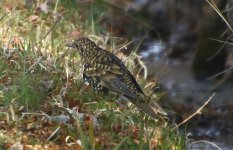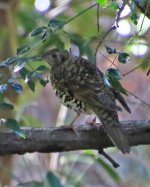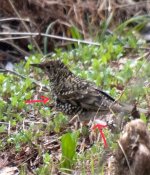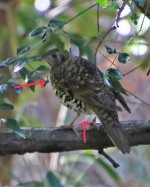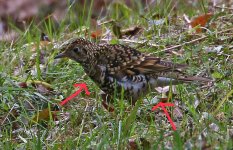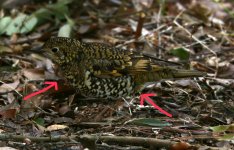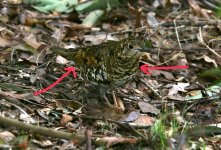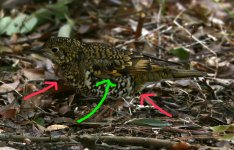Mac, the taxon of Scaly that occurs in Japan is iriomotensis which, according the Brazil's latest, is restricted to Yaeyama Is., part of the Iriomote group close to Taiwan, where it is a rare resident. Given its proximity to Taiwan it's plausible that the same taxon that is resident there. The chances of a migrant nominate dauma occurring in Japan are extremely unlikely-nil.
You seem again to be relying on 'authorities'. You seem to be assuming that the species and their taxons have been fixed along with their distribution. But I thought that species differentiation and distribution was precisely what was being discussed here.
I'm pretty sure Mark Brazil hasn't done any personal research on White's / Scaly since his 'Birds of East Asia' and so if his new book has a different set of species and distribution, then he is himself relying on authorities - other people's opinion about something which is undecided and on which he is not necessarily better informed than many others. And I thought we were all in agreement that for this / for these species this is by no means decided. (As I pointed out in an earlier post, Handbook of Birds of the World seems to be quite mixed up about this species compex and its distribution.)
Although you say that Scaly has twelve tail feathers and White's fourteen (as I said, I can't afford the references you give, but you are free to post here a screenshot of the relevant paragraphs from those books if it is as definite as you say, rather than simply the result of mixing Amami Thrush with one of the other groups), you also say that the toratsugumi ssp of White's (or Scaly, if you don't differentiate them as Japanese authorities don't) can have 12 or 14.
But it seems to me strange that a single species and even moreso a single race of a sub-species can have different numbers for a feature as basic as the tail.
As I said before, Japanese authorities have 12 retrices as a distinguishing feature of Amami Thrush which I thought all were agreed on making its own species (and 14 on Scaly/White's).
Regarding your images see no reason why they are not all toratugumi (White's), the 'differences' you point out could be explained by lighting, individual variation not to mention the quality of the image.
Well, Grahame, lighting and individual variation was what I originally said about the differences between Steve's images of 'Scaly' and 'White's', but that was rejected, as I later thought, correctly; but if you would like to suggest his two photos are the same bird, or alternatively pick out what is distinctive in his two, but not mine, that would be great.
And I picked photos where the lighting was clear. And the rufous parts seem clearly different to me, especially the stretch down to the vent, and similar to the differences between Steve's two birds.
And all the images were 3000 pixels wide when taken, but reduced for BF, so I don't think 'quality' of the photo is relevant. Maybe you are just looking on a phone? But on my 27" screen, there's a lot of difference.
I'm not sure I see the point of this link. As far as I can see, it's just pale birds. The bottom one is just a pale bird. The top one seems to have a little rufous on the throat (like my photo three, but weaker), but it doesn't have the rufous bar down from the belly marking off the vent that I have tried to point out in Steve's 'Scaly' and my bird 4 & 5. And nor does it have the rufous on the tertial tips that I mentioned and now I have marked in green on the attached photo.






